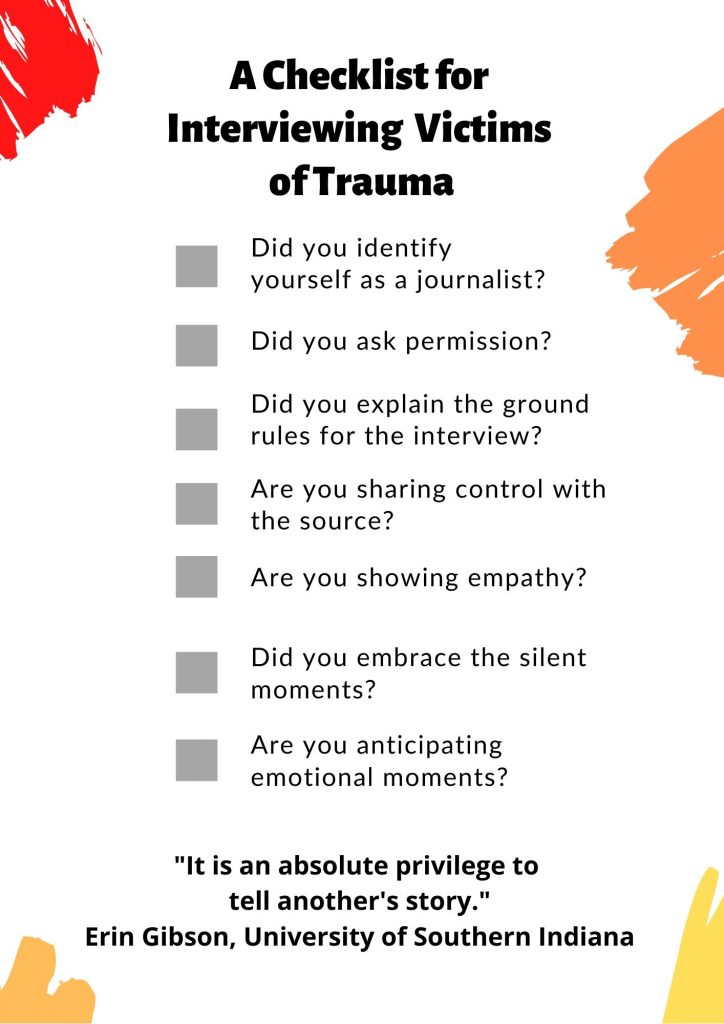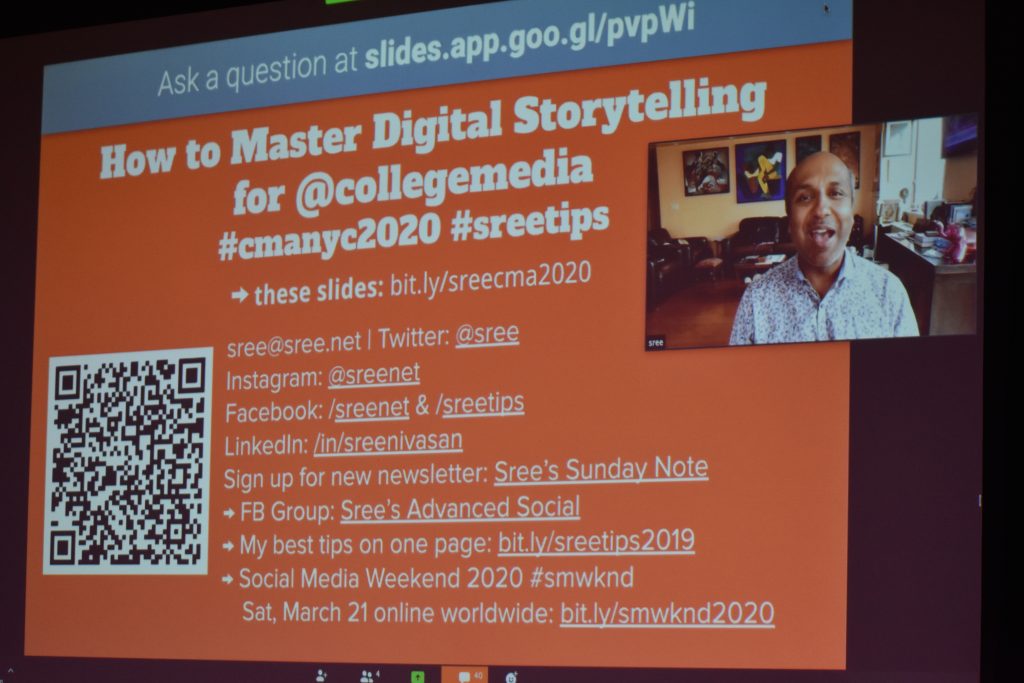Author: Danielle Birzer
TIPS FOR WRITING ABOUT TRAUMA ON COLLEGE CAMPUSES
CMA President Kenna Griffin gave tips to students in attendance at the Trauma Journalism track session called “Trauma on College Campuses”.
Griffin gave the following 11 tips:
- Don’t offer a single cause for a complex issue. Traumatic situations aren’t explained by just one issue (i.e. mental illness). There could be innumerable reasons why a person is struggling.
- Understand the power of images to convey a message. Also, not all photos belong on the cover, and some photos don’t need to go inside the paper either.
- Don’t make the killer the her. Traumatic situations should not be sensationalized. Think about your audience takeaway.
- Listen to your audience. Do they think you’ve done something problematic by way of your reporting or investigative process? If you think you have, consider addressing it in your editorial to make a statement.
- Consider that kids do feel safe at school. We are more relaxed in our natural environments, but we still need to be aware while we’re in them.
- Understand the grieving process. There’s never a right way to grieve, and don’t assume someone’s innocence or guilt based off their reaction. You’re there to get a story and learn their perspective while getting the facts of what took place, not to make judgement calls.
- Don’t be part of the trauma. Know your personal boundaries. Are you crossing a line for yourself or for others? Be sensitive to your needs and the needs of those you’re interviewing.
- Understand their desire to not be public. Listen to the boundaries of others. You can push in some cases respectfully but know your limit.
- Understand the potential for past trauma. Rehashing trauma in an interview has the potential to bring up triggers both for you as the journalist and for the subject.
- Have a newsroom where individuals can opt out of assignments if necessary.
- Recognize the tendency to exaggerate. The drive to exaggerate situations needs to be tempered in situations like this. Verify, verify, verify all of your information.
PHOTO GALLERY: Keynote Speaker – Beth Karas on “Covering Crime: A View from the Trenches”
PHOTO GALLERY: Keynote Speaker: Sree Sreenivasan & 8 Ways to Master Digital Storytelling in 2020
digital storytelling techniques.
Date: March 12, 2020.
Photo credit: Danielle Birzer
Trauma Journalism: “Interviewing Victims of Trauma”
Erin Gibson, instructor of journalism at the University of Southern Indiana, spoke with students on Thursday’s afternoon session about the nuances interviewing individuals who are trauma victims.
“It is an absolute privilege to tell another’s story. No one anywhere owes you any story either. So when an individual opens the door, it’s a privilege, and you’d better handle it very carefully,” Gibson said.
She also admonished students to always seek truth and reporting it, while important, can be damaging if handled without compassion and without awareness of the interviewee’s emotions.
The checklist below is inspired by Gibson’s do’s versus don’ts list regarding the interview process.

How Do Journalists Recognize Emotional Trauma?
The terms “trauma”, “triggers”, and “PTSD” have increasingly become hot button topics in today’s society as individuals become more aware of their mental health status and how it impacts their daily life.

“Trauma or PTSD are not words to be thrown around. They are diagnosable, medical conditions,” Kenna Griffin, CMA President, professor, and leader for Thursday’s second trauma journalism said in her session entitled “Recognizing Emotional Trauma.”
What is trauma? According to the American Psychological Association, trauma is an emotional response to a terrible event like an accident, rape, or natural disaster. Usually there are long- and short-term reactions.
Trauma symptoms result in unwanted memories, dreams, flashbacks or re-experiencing of trauma, physical reaction to reminders of said incident, avoidance of the location of the incident, depression symptoms, self-blame or guilt regarding the incident, and a constant sense of hypervigilance.
“There can be a lot of self-guilt involved in various situations, especially when people are trapped in vehicles or under rubble, etc. and you’re just standing there with a notepad in your hands,” Griffin said.
There are three levels of emotional trauma: adjustment disorder (a psychological stressor response), acute stress disorder (symptoms lasting more than a week, not yet a month in length), and post-traumatic stress disorder (severe symptoms lasting for at least a month).
Resilience is key to overcome personal trauma experience and resilience is best acquired by training, hence the importance of training with regard to the journalism profession.
“Social support is critical,” Griffin said. “How do you help each other in the newsroom? Being a journalist becomes such a part of your personal identity, it can be hard to compartmentalize things that take place that really affect you.”
Griffin advised students to provide emotional, informational, social, and instrumental support as each of these factors plays to a specific psychological as well as practical support network that should be built naturally into every newsroom.
According to the U.S. Department of Veterans Affairs and the National Center for PTSD, journalists surveyed said that they believed that if they claim that their reporting experiences were significantly affecting them they would be seen as weak and less capable by the public and their fellow colleagues who were less affected by similar or the same traumatic reporting scenario.















